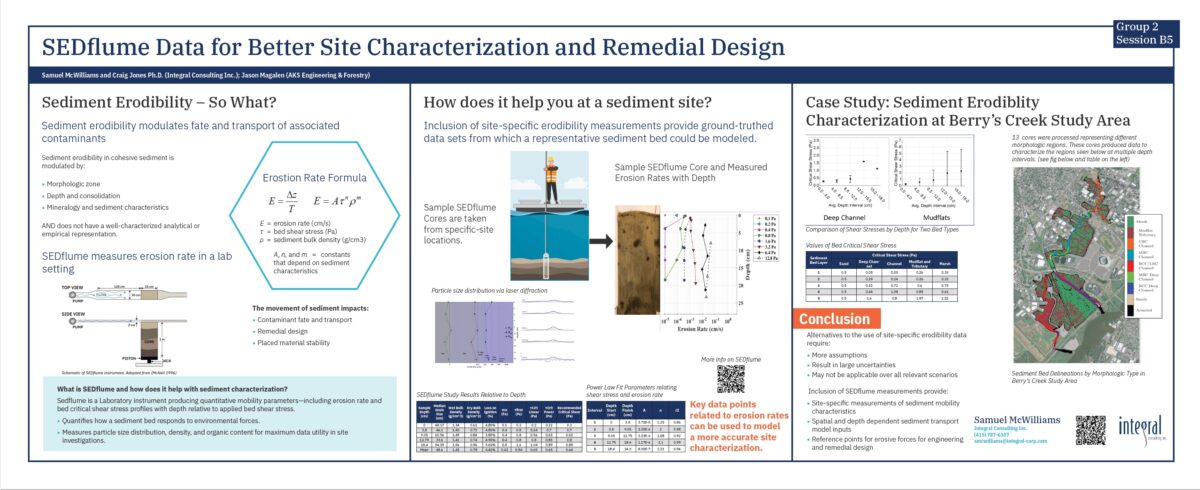Application of Sediment Erodibility Measurements in Site Characterization
By Samuel McWilliams, E.I.T., Senior Consultant, Technical Director - Marine Science and Engineering
Craig A. Jones, Ph.D., Managing Principal, Business Director - Marine, Coastal, Climate, and Technology Services
Additional contribution by Jason Magalen, Solmar Hydro, Portland, OR USA (jason@solmarhydro.com)
Poster presented at Battelle Sediments Conference, Jan 9-12, 2023, Austin, Texas
Background/Objectives
Sediment transport processes are often the primary mechanisms for the movement of contaminants of concern at environmental sites. Persistent contaminants are generally sorbed to sediment that deposits to the sediment bed over time, yet remain at risk of transport due to future resuspension events. The lack of analytical solutions identifying key resuspension properties of cohesive materials necessitates the use of direct measurements to characterize the potential for sediment mobilization. Inclusion of site-specific erosion measurements in conceptual site models and numerical modeling efforts can improve our understanding of a sediment bed’s response to environmental forces and ultimately the fate and transport of associated contaminants. Erodibility measurements can be used to define differing compositions of sediment by characterizing the sediment stratification, spatial variations, and morphologic bed types. This overview focuses on methods for the application of sediment erodibility data to improve overall site characterization.
Approach/Activities
Over the past few decades, direct measurements of erodibility have been collected worldwide at contaminated sediment sites. At these sites, SEDflume was used to obtain measurements of erosion rates in a wide range of environments over a broad span of applied flows and shear stresses. Data have been analyzed to determine erosion functions and critical shear stresses with respect to morphologic type and other physical parameters in the sediment bed. Results from these SEDflume studies have been integrated into conceptual and numerical models to analyze a site’s response to average and storm-related forcing events on multiple time scales. Studies of riverine and estuarine sites have benefited from the collection of SEDflume data to model the distribution of contaminated sediment and bolster conceptual site models of the system.
Results/Lessons Learned
Alternatives to the use of site-specific erodibility data require more assumptions, result in large uncertainties, and may not be applicable over all relevant scenarios. Inclusion of site-specific erodibility measurements provides ground-truthed data sets from which a representative sediment bed could be modeled. The erodibility characterization methodology presented here provides a range of data from which to calibrate the model and conduct sensitivity of the site’s response to changing bed parameters. The inclusion of sediment layers allows the bed to respond to forces appropriately depending on the active, engaged layer. Spatially varying the bed properties of critical shear stress and associated erosion rates results in correctly determining sediment flux through a site.




